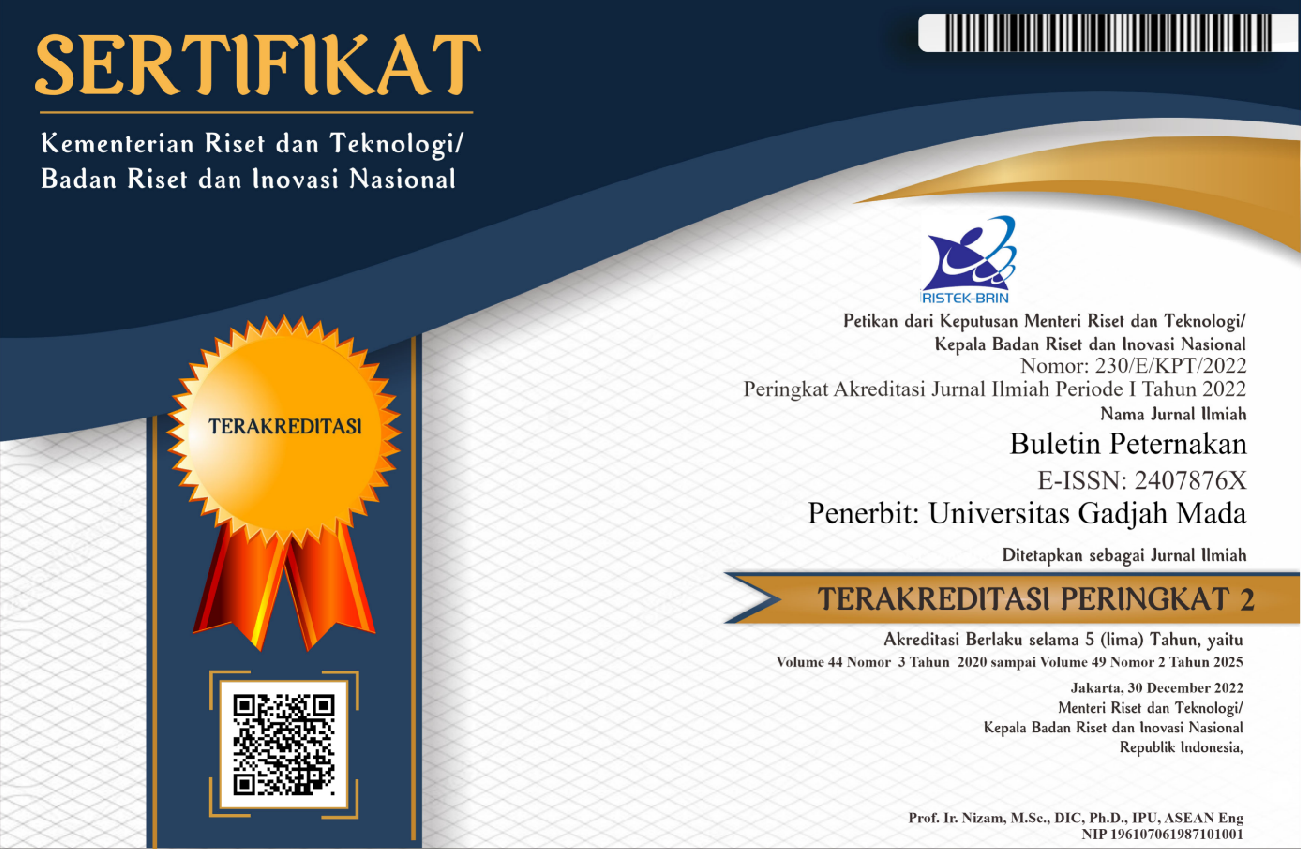Kualitas Bakso Daging Sapi Peranakan Ongole yang Diberi Pakan Basal Tongkol Jagung dan Undegraded Protein dalam Complete Feed (The Quality of Meatball Made From Meat of Ongole Crossbred Fed Corncob Basal Diet and Undegraded Protein in Complete Feed)
Karina Mia Berutu(1*), Edi Suryanto(2), Ristanto Utomo(3)
(1)
(2)
(3)
(*) Corresponding Author
Abstract
The experiment was conducted to determine the chemical composition, physical and organoleptic quality of meatballs made from meat of Ongole Crossbred (PO) fed corncob basal feed and undegraded protein in complete feed.
Twelve PO cattle were divided into 3 treatment groups of forage and concentrate (P1), complete feed (P2), and complete feed and undegraded protein (P3). At the end of experiment, nine cattle PO were slaughtered and the meat of
Longissimus dorsi (LD) and Biceps femoris (BF) muscles were used for making meatballs. The meatball was then used for chemical, physical and organoleptical tests. The data of chemical and physical quality were analyzed by analysis of
variance Randomized Complete Block Design (RCBD) and the significant means different were further tested by Duncan's New Multiple Range Test. Organoleptic characteristics of data non-parametric statistics were analyzed with
the Kruskal-Wallis method. The results showed that the type of muscle did not significantly affect water content, protein content, pH and water binding capacity, except fat and tenderness of meatball. The fat content of LD meatball (2.57%)
was lower than BF meatball (2.66%), whereas the tenderness of LD meatball (14.95 mm) was higher than BF meatball (11.93 mm). The feed treatment significantly affected (P<0.01) water, fat, protein content and pH of meatball.
Meatballs of P1, P2, and P3 groups contained moisture of 66.07, 66.36, and 68.57%, crude fat of 2.59, 2.62, and 2.63%, crude protein of 12.41, 13.48, and 13.90%, pH 6.76, 6.30, and 6.01 respectively. The statistical tests of
organoleptic quality of meatballs and feed treatment showed that there was significant different (P<0.01) of color, flavor, texture, and tenderness. LD and BF meatballs had scores of color 2.63 and 2.58, flavor 2.55 and 2.68, texture
2.90, and 2.62, and tenderness 2.60 and 2.97 respectively. P1, P2, and P3 meatballs had scores of color 2.51, 2.56, and 2.73, flavor 2.94, 2.44, and 2.45, texture 3.09, 2.76, and 2.43, and tenderness 2.85, 2.77, and 2.74 respectively. It could be concluded that the feed treatment significantly affected the organoleptic quality of meatball such as color, flavor, texture, and tenderness.
(Key words: PO cattle bred, Complete feed, Undegraded protein, Meatballs quality)
Full Text:
PDFArticle Metrics
Refbacks
- There are currently no refbacks.
Buletin Peternakan (Bulletin of Animal Science) Indexed by:

This work is licensed under a Creative Commons Attribution-ShareAlike 4.0 International License.









